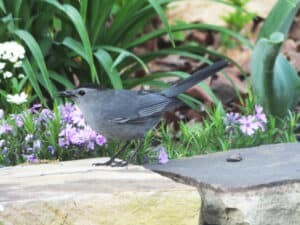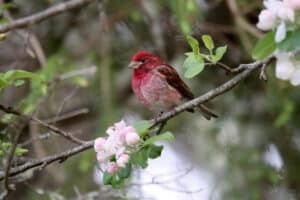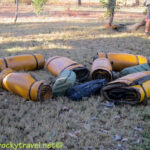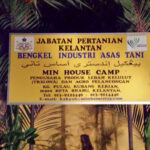Are you eager to explore the vibrant birdlife of Vietnam? Understanding the optimal time for bird watching is essential. SIXT.VN offers expert advice and seamless travel solutions to enhance your birding adventure. Discover prime birding seasons and travel tips for an unforgettable experience. Consider exploring bird migration patterns and local avian hotspots.
1. Unveiling the Prime Time for Bird Watching
Want to know the absolute best time to witness the avian wonders around you? The prime time for bird watching hinges on several factors, including the season, weather, time of day, and even the day of the week, each playing a pivotal role in the diversity and activity of birds you can observe.
1.1 Seasonal Bird Watching: A Year-Round Guide
What impact does the time of year have on birding? The season profoundly impacts birding, especially in regions with harsh winters. Birding during a pleasant spring day will yield more species than in mid-winter. While winter offers unobstructed views due to bare trees, spring brings a surge of avian activity.
1.1.1 Spring: A Bonanza of Birds
Why is spring considered the best time for bird watching? Spring offers a unique combination of resident, returning summer, and migrating species, creating a “triple dose” of birdlife. For example, a black and white warbler might appear in your yard for a couple of days before continuing north to its breeding range, making spring your only chance to see it.
1.1.2 Autumn: A Season of Change
What happens during autumn bird migration? In the fall, many species migrate to warmer climates before winter, while some northern species move south, replacing them. Although the total number of species is less than in spring, fall migration still offers unique birding opportunities.
 Autumn leaves and migrating birds
Autumn leaves and migrating birds
Gray catbird photo by A. Meganck exemplifies birds that migrate, showcasing why autumn and spring are optimal for birdwatching.
1.1.3 Winter: Clear Views, Fewer Species
Is winter a good time for bird watching? Winter birding might not offer the same diversity as spring or fall, but the absence of leaves provides clear views of the birds that remain. It’s a great time to focus on resident species and winter visitors.
1.1.4 Summer: Breeding Season
What can you expect during summer bird watching? Summer is the breeding season, with birds actively nesting and raising their young. While some species may be less active during the hottest parts of the day, early mornings and late afternoons can be rewarding.
1.2 How Weather Conditions Affect Bird Watching
Do weather conditions impact bird activity? Extreme weather conditions, such as very hot or cold days, reduce bird activity. Birds focus on finding food and water rather than being active. Similarly, severe weather like torrential rains or strong winds forces birds to seek shelter.
1.2.1 Ideal Weather for Birding
What are the best weather conditions for bird watching? The best times for birding are often before or after a storm, when birds are more active. Avoiding extreme temperatures and severe weather will maximize your birding experience.
1.3 Timing Is Everything: The Best Time of Day for Bird Watching
When is the most active time for birds during the day? Birds live by the solar clock, becoming most active around sunrise, known as the dawn chorus. This is when birds sing robustly and replenish their energy after the night.
1.3.1 Dawn Chorus: The Early Bird Gets the Worm
Why is the dawn chorus so important for birders? The dawn chorus offers the best opportunity to see and hear a wide variety of birds. They are actively feeding and singing, making them easier to spot.
1.3.2 Midday Doldrums
What is the best strategy during the midday heat? Midday is generally quiet, with birds resting to conserve energy. Some birders suggest focusing on butterflies during this time, as they are more active in the heat.
1.3.3 Sunset Snack
Why are birds active again at sunset? Around sunset, birds search for a final snack before settling in for the night. This is another good time to observe bird activity.
 Sunset over bird habitat
Sunset over bird habitat
Purple finch photo by D. Dawes highlights the beauty of birdwatching during dusk and dawn, the most active times for birds.
1.4 The Impact of the Day of the Week on Birding
Does the day of the week matter for bird watching? While birds don’t follow a human work week, the day of the week can impact the birding experience. Weekends tend to be busier, with more people in nature.
1.4.1 Weekends: Pros and Cons
What are the advantages and disadvantages of birding on weekends? On weekends, you may find it easier to “tag along” with experienced birders and ask questions. However, birds prefer quiet environments and may be more hidden due to increased human activity.
1.4.2 Weekdays: A Quieter Experience
Why might weekdays be better for bird watching? Weekdays offer a quieter environment, potentially leading to more bird sightings. However, there may be fewer experienced birders around to offer guidance.
2. Bird Watching in Vietnam: A Seasonal Paradise
Vietnam, with its diverse ecosystems, offers incredible bird watching opportunities year-round. However, understanding the seasonal variations can significantly enhance your experience. SIXT.VN provides expert guidance to navigate Vietnam’s avian hotspots during their peak seasons.
2.1 Spring Birding in Vietnam (March to May)
Why is spring a great time for bird watching in Vietnam? Spring in Vietnam brings pleasant weather and the return of migratory birds. This is an excellent time to spot a wide variety of species as they pass through or arrive to breed.
2.1.1 Key Locations for Spring Birding
Where are the best places for spring bird watching in Vietnam?
- Cuc Phuong National Park: One of Vietnam’s oldest and most important protected areas, Cuc Phuong is home to a wide variety of birds, including many migratory species.
- Cat Tien National Park: Known for its lowland rainforest, Cat Tien is a prime location for seeing endemic species.
- Bach Ma National Park: This park offers a mix of forest types, attracting a diverse array of birds.
2.2 Summer Birding in Vietnam (June to August)
What can you expect during summer birding in Vietnam? Summer is the breeding season for many resident birds in Vietnam. While the weather can be hot and humid, early mornings offer excellent birding opportunities.
2.2.1 Top Summer Birding Spots
Where should you go for summer bird watching in Vietnam?
- Yok Don National Park: This park in the Central Highlands is home to many dry forest species.
- Tram Chim National Park: A wetland paradise in the Mekong Delta, Tram Chim is ideal for observing waterbirds.
2.3 Autumn Birding in Vietnam (September to November)
Why is autumn an ideal time for bird watching in Vietnam? Autumn brings the southward migration, making it a fantastic time to see migratory birds passing through Vietnam. The weather is also generally cooler and more comfortable.
2.3.1 Prime Autumn Locations
Which locations are best for autumn bird watching in Vietnam?
- Phong Nha-Ke Bang National Park: This park offers a mix of limestone karst landscapes and forests, attracting a variety of migratory birds.
- Con Dao National Park: An archipelago off the southern coast, Con Dao is a key stopover point for migratory birds.
2.4 Winter Birding in Vietnam (December to February)
What makes winter a unique time for bird watching in Vietnam? Winter in Vietnam is relatively mild, making it a comfortable time for bird watching. It’s also when many northern species migrate to Vietnam to escape the cold.
2.4.1 Best Winter Birding Destinations
Where are the top spots for winter bird watching in Vietnam?
- Red River Delta: This area is a crucial wintering ground for many waterbirds.
- Mekong Delta: The Mekong Delta offers a variety of wetland habitats, attracting a diverse array of wintering birds.
3. Essential Gear for Bird Watching
What equipment do you need for a successful bird watching trip? Having the right gear can significantly enhance your bird watching experience. Essential items include binoculars, a field guide, comfortable clothing, and a notebook for recording your observations.
3.1 Binoculars: Your Eyes to the Avian World
Why are binoculars crucial for bird watching? Binoculars are essential for getting a close-up view of birds, allowing you to identify species and observe their behavior.
3.1.1 Choosing the Right Binoculars
What should you consider when choosing binoculars?
- Magnification: 8x or 10x magnification is generally recommended for bird watching.
- Objective Lens Diameter: A larger objective lens (e.g., 42mm) gathers more light, providing brighter images.
- Optical Quality: Look for binoculars with high-quality lenses and coatings for sharp, clear images.
- Comfort: Choose binoculars that are comfortable to hold and use for extended periods.
3.2 Field Guide: Your Avian Encyclopedia
Why is a field guide important for bird identification? A field guide helps you identify the birds you see, providing information on their appearance, habitat, and behavior.
3.2.1 Selecting a Field Guide
What should you look for in a field guide?
- Comprehensive Coverage: Choose a guide that covers the birds in your region.
- Detailed Illustrations or Photos: Clear visuals are essential for accurate identification.
- Range Maps: These maps show where each species is likely to be found.
- User-Friendly Layout: A well-organized guide makes it easier to find information quickly.
3.3 Clothing and Comfort: Dress for Success
What type of clothing is best for bird watching? Comfortable clothing that is appropriate for the weather is essential for a successful bird watching trip.
3.3.1 Essential Clothing Items
What clothing items should you bring on a bird watching trip?
- Layers: Dress in layers so you can adjust to changing temperatures.
- Neutral Colors: Avoid bright colors that could scare away birds.
- Comfortable Shoes: Wear shoes that are suitable for walking on uneven terrain.
- Hat and Sunscreen: Protect yourself from the sun.
- Rain Gear: Be prepared for unexpected rain.
3.4 Notebook and Pen: Documenting Your Discoveries
Why should you keep a bird watching journal? A notebook and pen are useful for recording your observations, including the species you see, their behavior, and the location and date of your sightings.
3.4.1 Tips for Journaling
How can you make the most of your bird watching journal?
- Record Key Information: Note the date, time, location, and weather conditions.
- Describe the Bird: Include details about its size, shape, color, and markings.
- Note Behavior: Observe what the bird is doing, such as feeding, singing, or flying.
- Add Sketches: A quick sketch can help you remember key features.
4. Vietnam’s Avian Treasures: Must-See Bird Species
What are some of the iconic bird species you can see in Vietnam? Vietnam is home to a wealth of bird species, many of which are found nowhere else in the world. From colorful pheasants to elusive hornbills, the country offers a diverse array of avian treasures.
4.1 Endemic Wonders
What are some unique bird species found only in Vietnam? Vietnam boasts several endemic bird species, making it a must-visit destination for birders seeking unique sightings.
4.1.1 The Vietnamese Cutia
Where can you find the Vietnamese Cutia? The Vietnamese Cutia is a colorful bird found in the montane forests of central Vietnam.
4.1.2 The Grey-Crowned Crocias
What is unique about the Grey-Crowned Crocias? The Grey-Crowned Crocias is a critically endangered species found only in a small area of Vietnam.
4.2 Colorful Pheasants
What types of pheasants can be seen in Vietnam? Vietnam is home to several species of colorful pheasants, including the Edwards’s Pheasant and the Imperial Pheasant.
4.2.1 Edwards’s Pheasant
Where does the Edwards’s Pheasant live? Edwards’s Pheasant is a critically endangered species found only in the forests of central Vietnam.
4.2.2 Imperial Pheasant
What makes the Imperial Pheasant special? The Imperial Pheasant is a large, striking bird found in the montane forests of central Vietnam.
4.3 Elusive Hornbills
What hornbill species can be found in Vietnam? Vietnam is home to several species of hornbills, including the Great Hornbill and the Rufous-cheeked Hornbill.
4.3.1 Great Hornbill
Where can you spot the Great Hornbill? The Great Hornbill is a large, impressive bird found in the forests of Vietnam.
4.3.2 Rufous-cheeked Hornbill
What are the identifying features of the Rufous-cheeked Hornbill? The Rufous-cheeked Hornbill is a smaller hornbill species found in the forests of Vietnam.
5. Bird Watching Tours in Vietnam: Let SIXT.VN Be Your Guide
Why should you book a bird watching tour with SIXT.VN? Maximize your bird watching experience in Vietnam with SIXT.VN’s expertly guided tours. Our local experts ensure you visit the best spots at the right times, increasing your chances of spotting rare and endemic species. Enjoy hassle-free travel with comfortable accommodations and seamless transportation.
5.1 Customized Itineraries for Bird Enthusiasts
Can SIXT.VN tailor a bird watching tour to your specific interests? SIXT.VN offers customized itineraries to match your interests and skill level. Whether you’re a beginner or an experienced birder, we can create a tour that meets your needs.
5.1.1 Focus on Endemic Species
Do you want to see Vietnam’s unique birds? We can design a tour that focuses on finding endemic species, such as the Vietnamese Cutia and the Grey-Crowned Crocias.
5.1.2 Migration Hotspots
Are you interested in migratory birds? We can take you to the best locations for observing bird migration, such as the Red River Delta and Con Dao National Park.
5.2 Expert Local Guides
Why are local guides essential for bird watching in Vietnam? Our expert local guides have extensive knowledge of Vietnam’s birdlife and ecosystems. They can identify birds by sight and sound, and they know the best places to find them.
5.2.1 Bird Identification Skills
Can our guides help you identify birds? Our guides can help you identify birds and provide information on their behavior and habitat.
5.2.2 Access to Prime Locations
How do our guides know the best birding spots? Our guides have access to prime birding locations, including remote areas that are not easily accessible on your own.
5.3 Hassle-Free Travel Arrangements
How does SIXT.VN make your bird watching trip easier? SIXT.VN takes care of all the travel arrangements, including transportation, accommodations, and meals.
5.3.1 Comfortable Transportation
How do you get around during the tour? We provide comfortable transportation to and from birding locations.
5.3.2 Accommodation Options
Where will you stay during the tour? We offer a range of accommodation options to suit your budget and preferences.
6. Ethical Bird Watching: Respecting Nature’s Wonders
What are the guidelines for ethical bird watching? Ethical bird watching practices are essential for protecting birds and their habitats. Always observe birds from a distance, avoid disturbing nesting sites, and never use playback recordings to attract birds.
6.1 Minimizing Disturbance
How can you minimize your impact on birds?
- Stay on Trails: Stick to established trails to avoid trampling vegetation and disturbing wildlife.
- Keep a Distance: Observe birds from a distance to avoid stressing them.
- Avoid Nesting Sites: Never approach or disturb nesting sites.
- Limit Noise: Keep noise to a minimum to avoid scaring birds.
6.2 Responsible Photography
What are the ethical considerations for bird photography? Bird photography should be done responsibly, with the bird’s well-being as the top priority.
- No Flash Photography: Avoid using flash photography, as it can disturb birds.
- No Baiting: Never use bait to attract birds, as it can alter their natural behavior.
- Respect Nesting Birds: Do not approach nests too closely, and never touch eggs or chicks.
6.3 Supporting Conservation Efforts
How can you contribute to bird conservation? Support local conservation organizations and initiatives that protect birds and their habitats.
- Donate to Conservation Groups: Contribute to organizations that work to protect birds and their habitats.
- Participate in Citizen Science Projects: Join citizen science projects that monitor bird populations and habitats.
- Educate Others: Share your knowledge and passion for birds with others, encouraging them to become responsible bird watchers.
7. Planning Your Bird Watching Trip with SIXT.VN: A Step-by-Step Guide
How can SIXT.VN help you plan your bird watching adventure? Planning a bird watching trip to Vietnam can be overwhelming, but SIXT.VN makes it easy with our comprehensive services. Follow our step-by-step guide to create your perfect birding itinerary.
7.1 Consultation and Customization
How do you start planning your trip with SIXT.VN? Contact SIXT.VN for a free consultation. Our travel experts will discuss your interests, budget, and time frame to create a customized itinerary.
7.1.1 Contacting Our Experts
How can you get in touch with SIXT.VN? You can reach us via phone, email, or our website.
Address: 260 Cau Giay, Hanoi, Vietnam
Hotline/Whatsapp: +84 986 244 358
Website: SIXT.VN
7.1.2 Tailoring Your Itinerary
How can you personalize your bird watching tour? Let us know your specific interests, such as endemic species, migratory birds, or specific habitats. We will tailor your itinerary accordingly.
7.2 Booking Flights and Accommodations
Can SIXT.VN handle your travel arrangements? SIXT.VN can book your flights and accommodations, ensuring a seamless travel experience.
7.2.1 Finding the Best Flights
How does SIXT.VN find the best flight deals? We work with a network of airlines to find the best flight deals for your travel dates.
7.2.2 Selecting Accommodations
What types of accommodations are available? We offer a range of accommodation options, from budget-friendly guesthouses to luxury hotels.
7.3 Arranging Transportation
How will you get around during your bird watching tour? SIXT.VN provides comfortable and reliable transportation to and from birding locations.
7.3.1 Airport Transfers
How can you get from the airport to your hotel? We offer airport transfer services for a hassle-free arrival.
7.3.2 Local Transportation
What types of local transportation are available? We provide transportation to birding locations, including private cars, vans, and boats.
7.4 Securing Permits and Visas
Does SIXT.VN assist with travel documents? SIXT.VN can assist with securing any necessary permits and visas for your trip.
7.4.1 Visa Assistance
How can you obtain a visa for Vietnam? We can provide guidance on the visa application process.
7.4.2 Park Permits
Do you need permits to visit national parks? We can help you obtain any necessary permits for visiting national parks and other protected areas.
8. Bird Watching Etiquette: Ensuring a Sustainable Hobby
Why is bird watching etiquette important? Bird watching etiquette ensures that this hobby remains sustainable and respectful of nature. This involves maintaining distance from birds, especially during nesting season, and refraining from using artificial means to attract them.
8.1 Respecting Wildlife
How can you show respect for wildlife while bird watching? Respecting wildlife involves minimizing disturbance to birds and their habitats. This includes staying on marked trails, keeping a safe distance, and avoiding nesting sites.
8.1.1 Maintaining Distance
Why is it important to maintain distance from birds? Maintaining distance reduces stress on birds, allowing them to behave naturally without feeling threatened.
8.1.2 Avoiding Nesting Sites
What should you do if you encounter a nesting site? If you encounter a nesting site, observe it from a distance and avoid any actions that could disturb the birds or their eggs.
8.2 Minimizing Environmental Impact
How can you reduce your environmental footprint while bird watching? Minimizing environmental impact includes packing out all trash, avoiding single-use plastics, and supporting eco-friendly businesses.
8.2.1 Packing Out Trash
Why is it important to pack out all trash? Packing out all trash prevents pollution and protects the natural environment for birds and other wildlife.
8.2.2 Supporting Eco-Friendly Practices
How can you support eco-friendly businesses? Choose accommodations, tour operators, and restaurants that prioritize sustainability and environmental conservation.
8.3 Engaging Responsibly with Local Communities
How can you engage responsibly with local communities? Engaging responsibly with local communities includes respecting local customs, supporting local businesses, and contributing to conservation efforts.
8.3.1 Respecting Local Customs
Why is it important to respect local customs? Respecting local customs promotes positive relationships with local communities and ensures a culturally sensitive travel experience.
8.3.2 Supporting Local Businesses
How can you support local businesses? Choose locally owned businesses for accommodations, meals, and souvenirs to support the local economy.
9. Bird Watching Safety: Prioritizing Your Well-Being
What safety precautions should you take while bird watching? Bird watching safety involves taking precautions to protect yourself from potential hazards, such as extreme weather, wildlife encounters, and remote locations.
9.1 Weather Preparedness
How can you prepare for various weather conditions? Weather preparedness includes checking the forecast, dressing in layers, and bringing appropriate gear for rain, sun, and temperature changes.
9.1.1 Checking the Forecast
Why is it important to check the forecast? Checking the forecast allows you to anticipate weather changes and prepare accordingly.
9.1.2 Dressing in Layers
Why is dressing in layers recommended? Dressing in layers allows you to adjust your clothing to changing temperatures and stay comfortable throughout the day.
9.2 Wildlife Awareness
How can you stay safe around wildlife? Wildlife awareness includes knowing the potential hazards in the area and taking precautions to avoid encounters.
9.2.1 Identifying Potential Hazards
What types of wildlife might pose a threat? Potential hazards may include venomous snakes, insects, and large mammals.
9.2.2 Avoiding Encounters
How can you avoid encounters with wildlife? Avoid encounters by staying on marked trails, making noise to alert animals to your presence, and keeping a safe distance.
9.3 Navigational Safety
How can you ensure you don’t get lost while bird watching? Navigational safety includes using maps, compasses, GPS devices, and letting someone know your plans.
9.3.1 Using Maps and Compasses
Why are maps and compasses essential tools? Maps and compasses help you navigate in areas without clear trails or landmarks.
9.3.2 Letting Someone Know Your Plans
Why is it important to inform someone of your plans? Informing someone of your plans ensures that someone knows where you are and can alert authorities if you don’t return as scheduled.
10. FAQs: Your Bird Watching Questions Answered
What are some common questions about bird watching? Here are some frequently asked questions to help you get started with bird watching.
10.1 What is the best time of day for bird watching?
The best time of day for bird watching is typically early morning, during the dawn chorus, when birds are most active.
10.2 What is the best season for bird watching?
Spring and autumn are generally considered the best seasons for bird watching, as they coincide with bird migration.
10.3 What equipment do I need for bird watching?
Essential equipment includes binoculars, a field guide, comfortable clothing, and a notebook.
10.4 How can I identify birds?
Use a field guide to compare the bird’s appearance, habitat, and behavior to known species.
10.5 How can I attract birds to my yard?
Attract birds by providing food, water, shelter, and nesting sites.
10.6 How can I protect birds?
Protect birds by supporting conservation efforts, minimizing disturbance, and practicing ethical bird watching.
10.7 What are some common bird watching destinations in Vietnam?
Common destinations include Cuc Phuong National Park, Cat Tien National Park, and Bach Ma National Park.
10.8 How can I find a bird watching tour in Vietnam?
SIXT.VN offers customized bird watching tours in Vietnam with expert local guides.
10.9 What is bird migration?
Bird migration is the seasonal movement of birds between breeding and wintering grounds.
10.10 What is an endemic bird?
An endemic bird is a species that is found only in a specific geographic area.
Ready to embark on your bird watching adventure in Vietnam? Let SIXT.VN guide you to the best locations, seasons, and experiences. Contact us today to plan your customized bird watching tour and discover the avian wonders of Vietnam! Explore the diverse birdlife with SIXT.VN’s tailored birding excursions. Consider a specialized bird photography tour for capturing stunning avian images.




